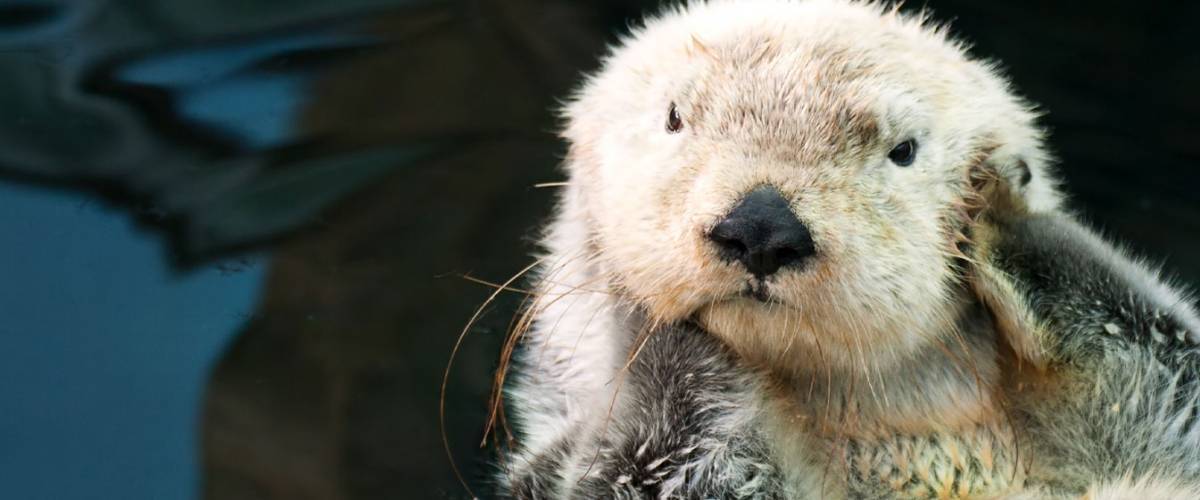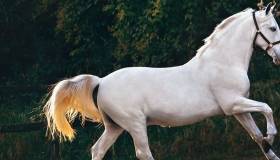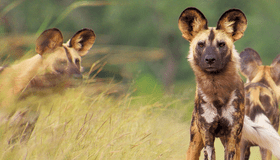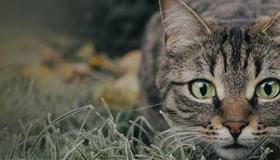
September 30, 2021 – In the 1800s, hunting was the biggest threat to sea otter populations. In fact, the sea otter was nearly declared extinct. Thanks to the Fur Seal Treaty in 1911 and further protection with the passing of the Marine Mammal Protection Act in 1972, sea otter populations came back from the brink.
Unfortunately, sea otters remain an endangered species with continued threats to their long-term survival, including disease concerns that have or continue to receive research funding from Morris Animal Foundation.
T. GONDII - A COMMON PARASITE BETWEEN OTTERS AND CATS
About a decade ago, researchers noticed that infectious diseases were responsible for more than 40% of all sea otter deaths. One of these diseases was caused by the parasite Toxoplasma gondii. T. gondii caused brain infections and deaths, and was contributing to further population declines in already threatened California sea otters.
The odd thing was that the organism has only one definitive animal host – cats. So how did the parasite get from land-bound cats to ocean-loving sea otters? In 2003, Morris Animal Foundation-funded researchers at the University of California, Davis, the California Department of Fish and Game, and the University of British Columbia School of Medicine set out to learn why.
The collaborative team identified a unique strain of T. gondii in sea otters along the central California coast. This strain could be found in 70% of the T. gondii cases studied throughout the sea otters’ range.
The next question the team wanted to answer was to learn if any wild or domestic cats in the area were infected with the same unusual strain of T. gondii. If so, could T. gondii reach threatened sea otters through contaminated freshwater runoff into the ocean, the suspected route of contamination? The team hypothesized that by tracking telltale clinical signs and the trail of oocysts (the infectious form of the parasite shed in cat feces), they could find the source of the otters’ infection.
The group found evidence of the T. gondii strain in a few domestic cats. However, more definitive data was collected in two mountain lions, a bobcat and a red fox. These animals lived immediately upstream of nearshore watersheds and in the center of the southern sea otter range. They also identified the T. gondii strain in a wild mussel collected along the shoreline, located downstream of the Salinas River. The Salinas River is the largest watershed in central California and an area with heavy freshwater runoff with a large population of domestic and wild cats living nearby.
These findings suggested sea otters were most likely infected with T. gondii via feces-polluted terrestrial-to-marine runoff. Early data suggested the most efficient route for infection was filter-feeding invertebrates, a favorite food of sea otters.
Thanks to this boots-on-the-ground research, findings from the study were critical in guiding management policies for sea otters. The results also were used in public awareness campaigns focused on the importance of keeping cats indoors, and properly disposing of their waste. Study findings also influenced the passage of California legislation that increased legal protection of the species as well as a law banning the use of flushable kitty litter. Flushable kitty litter is another route for the parasite to enter watersheds through treatment facility wastewater.
OCEAN TOXIN & HEART DISEASE
A newly recognized threat to sea otters is cardiomyopathy, a disease of the heart muscle and an important cause of death in adult southern sea otters. In a recent Morris Animal Foundation-funded study, researchers at the University of California, Davis, analyzed data gathered from an intensively monitored group of sea otters to better understand the association between cardiomyopathy and exposure to domoic acid.
Domoic acid is a toxin produced during marine algal blooms, known as red tides. When ingested by marine mammals, domoic acid can lead to tremors and seizures. The team found domoic acid exposure nearly doubled the risk of fatal cardiac disease in sea otters. Otters that ate large amounts of crab and clam (prey that accumulates domoic acid) were more than twice as likely to die of cardiomyopathy than otters that ate much less of these types of prey species.
The team also found sea otters with T. gondii infections had a more than two-fold increased risk of this fatal heart disease, adding to the complexity of the problem. Findings from this study will help inform disease management and conservation recovery efforts of southern sea otters.
NEW VIRUS, NEW THREAT
Another important disease threat to sea otters is phocine distemper virus, a virus similar to canine distemper virus. With Morris Animal Foundation funding, University of California, Davis, researchers identified, for the first time, the virus as the cause of sea otter deaths in Alaska. This was the first confirmation of phocine distemper in marine mammals in the Pacific Ocean.
The movement of the virus likely was due to changes in migration patterns resulting from decreases in the ice pack secondary to climate change. This allowed seals usually residing in the Atlantic Ocean to carry the virus to a new region and help spread the disease to new species. The virus is now considered to be an emerging health threat to sea otters and other marine mammals in the Pacific Ocean.
HOW YOU CAN HELP
Because otters are highly dependent on their niche aquatic ecosystems, they are very susceptible to changes in their environments. Since 1998, Morris Animal Foundation has funded nearly two dozen otter health studies, many of which are associated with changing marine environments that are creating new health challenges for otters. These studies would not be possible without donor support.
The good news is, with conservation and management, researchers are helping sea otter populations slowly rebound. In the early 20th century only a few thousand wild sea otters remained. Today, an estimated 100,000 live along the coasts of the Pacific Ocean in North America and Asia. However, these numbers are still well below their historical highs, and some populations are struggling to recover. More work is needed to ensure sea otter populations recover across their historical range.
If you would like to help sea otters and other coastal marine species thrive and survive, a gift to Morris Animal Foundation will help make the world a healthier place for animals.




